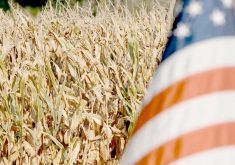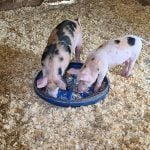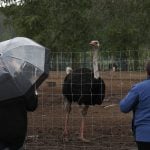RED DEER – Becoming friendly with a meat packer may seem like an unlikely alliance for beef producers, but it could be the best way to earn more money from their carcasses.
“Develop a relationship with one or more packers beyond knowing the name and phone number of your cattle buyer,” said researcher Ty Lawrence, who heads the beef carcass research centre at West Texas A and M University.
He told a recent beef education session in Red Deer that he once worked for Smithfield Foods and understands the adversarial relationship that often exists between cattle sellers and buyers.
Read Also

Charges laid after cattle theft
Saskatchewan RCMP lay two charges against a man after six cattle went missing.
“It is often filled with expletives that are not polite language,” he said.
A beef producer should meet the corporate bosses and ask who the customers are and whether they want beef for grocery stores or restaurants.
Cattle can be sold live, on the rail or on a grid system.
When cattle are sold live from the feedlot, the cattle buyer reaps the greatest risk and reward.
“Until the hide is peeled off, you have no idea what is in there,” he said.
The animals could grade Prime and end up as steaks at a fancy restaurant or become dark cutters destined for the grinding tub.
When cattle are sold on the rail, the greatest risk and reward still rests with the buyer, but the producer also takes some risk because more can happen to the animals and reduce the final price.
For example, a condemned animal earns nothing. Injuries such as a bad bruise during transit results in less salable meat because the spot must be trimmed away. This may be through no fault of the producer, who might never know it happened.
“When you sell cattle to the packer, it doesn’t matter how you sell them, you only sell the carcass,” he said.
Packers keep the drop credit, which includes the head, legs, hides, hoofs, glands and internal organs. This covers some of the packer expense because it costs $150 US for an animal to move from the stun box to boxed beef. However, drop credit values have fallen, especially in the hide market.
“Hides have gone from $100 per piece to $40 to $50 largely because of the automotive industry,” Lawrence said.
If a slaughter plant kills 6,000 head per day, that means 6,000 hides need a buyer for leather that once went for car upholstery or to Asian shoemakers.
Secure premiums
Lawrence favours a grid formula system, in which each carcass is sold individually and chances for premiums increase.
“In my opinion, it is the most fair way to trade cattle,” he said.
However, there can be considerable discounts for falling outside the specifications of the grid.
A grid usually starts by asking for a specific carcass weight. Those outside the range are discounted. Quality grades are also included in most grid formulas.
Canfax reports that the Canadian cattle industry produces less than one percent prime, 20 percent AAA, 30 percent AA and less than two percent A.
However, many cattle fall outside the quality specifications, which can lead to discounts.
In Canada, the B1 grade indicates the carcass lacked marbling. A B2 has yellow fat because the animal was probably fed lush green forage without enough starch.
A carcass with mushy muscle is likely high in acid with a low pH and is graded a B3, while a B4 is a dark cutter resulting from stress before slaughter. Normal muscle pH is about 7.2. When animals are killed, the muscles still try to live for about 18 hours but do not have access to oxygen, which means the muscle sugar is converted into lactic acid. The pH drops to 5.6 and turns the meat bright red.
When an animal experiences severe stress, the muscle glycogen is used up. Once they are killed, muscles cannot generate lactic acid. The muscle pH remains high and the meat turns dark.
In Canada, most dark cutters are ground up but in the United States the meat may go to food service outlets that cook the meat before it is sold.
Maturity can also downgrade a carcass.
When bone ends are ossified, the carcass could be downgraded to a D1, or mature grade. Heifers ossify faster than steers, even though chronologically they are the same age.
About nine percent of heifers are showing up as mature in Canadian plants, resulting in a significant discount.
Another factor downgrading a carcass is blood splash, which is the result of a capillary hemorrhage and is probably caused by extreme stress at death, such as from a poor stun.
Nothing is wrong with the meat but consumers do not like the look of it so it goes into the food service trade or may be ground.















